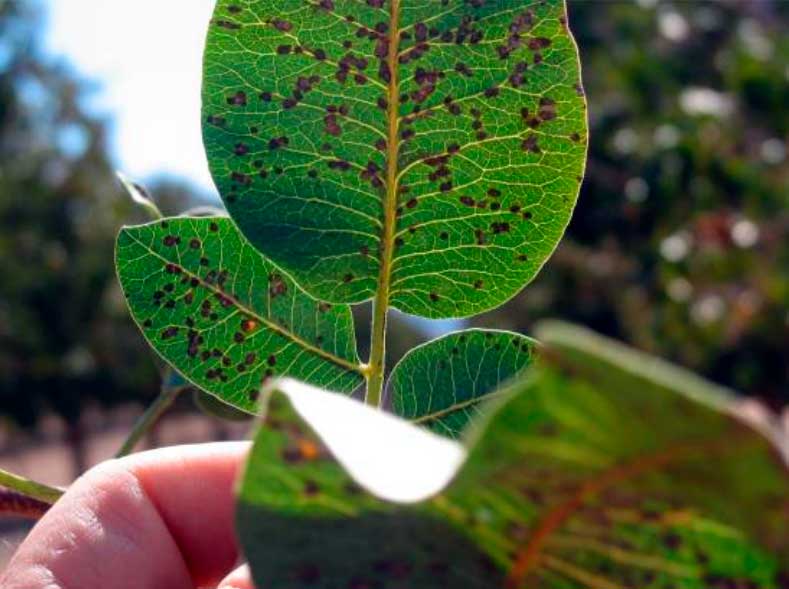Septoriasis in the pistachio tree: Causes, symptoms and control measures.

Septoria is a disease that affects the pistachio tree, common in all producing countries, caused by ascomycete fungi, such as Pseudocercospora pistacina, Septoria pistaciarum, S. pistaciae and Cylindroseptoria pistaciae. During the winter, the fungus remains on fallen leaves and is released in spring. In fact, spring rains are a key factor in the epidemiology of the disease.
Symptoms include irregular brown necrotic leaf spots between 1 and 2 mm. In size in leaves and fruits, which can increase in size, covering the leaf completely. To prevent the disease, it is recommended to prune infected branches, collect affected leaves and fruits and avoid imbalances in fertilization. There are also preventive treatments based on copper, potassium oleate and other fungicides. There are currently several investigations underway to improve the control of septoria in pistachios.
